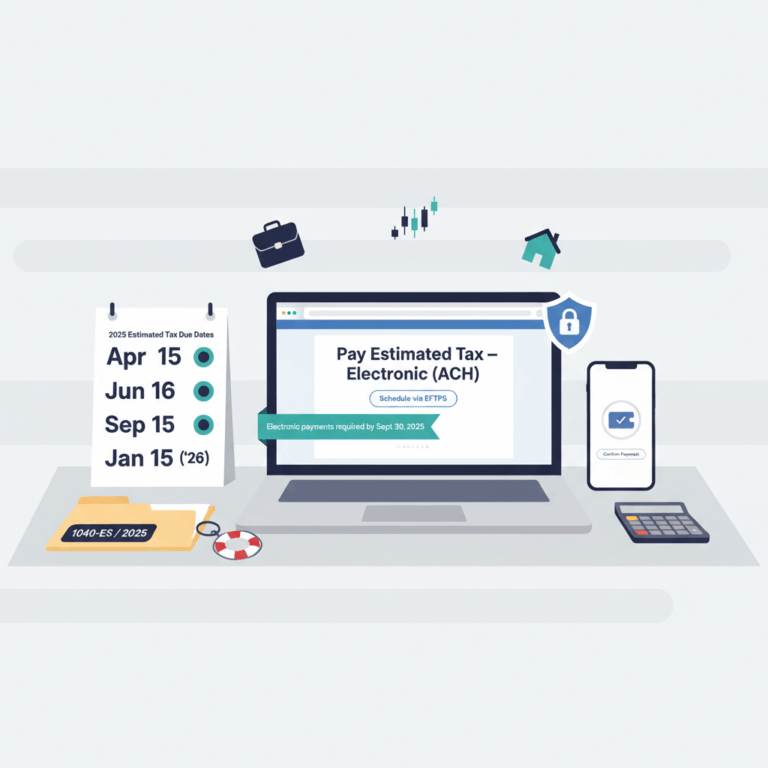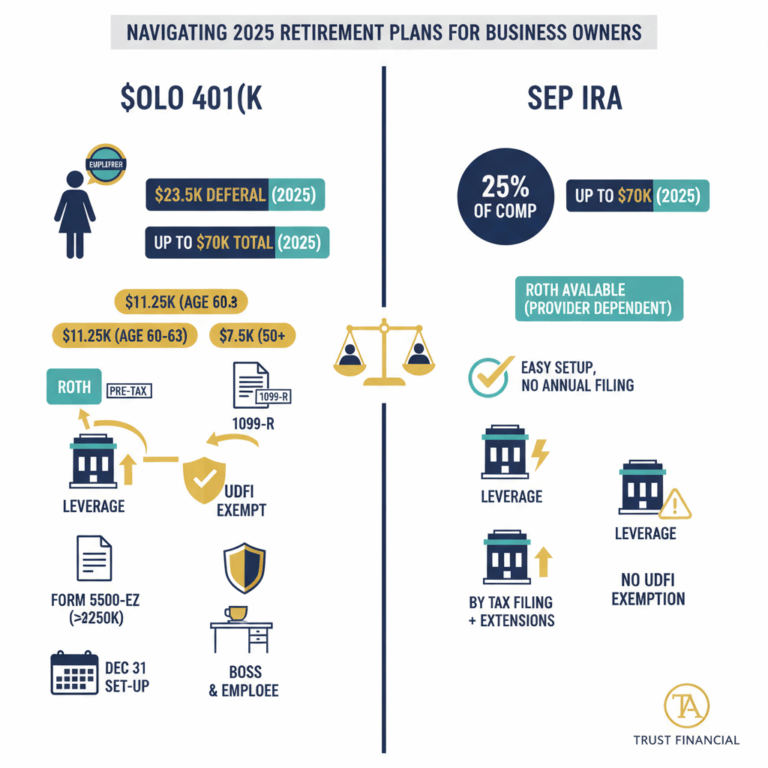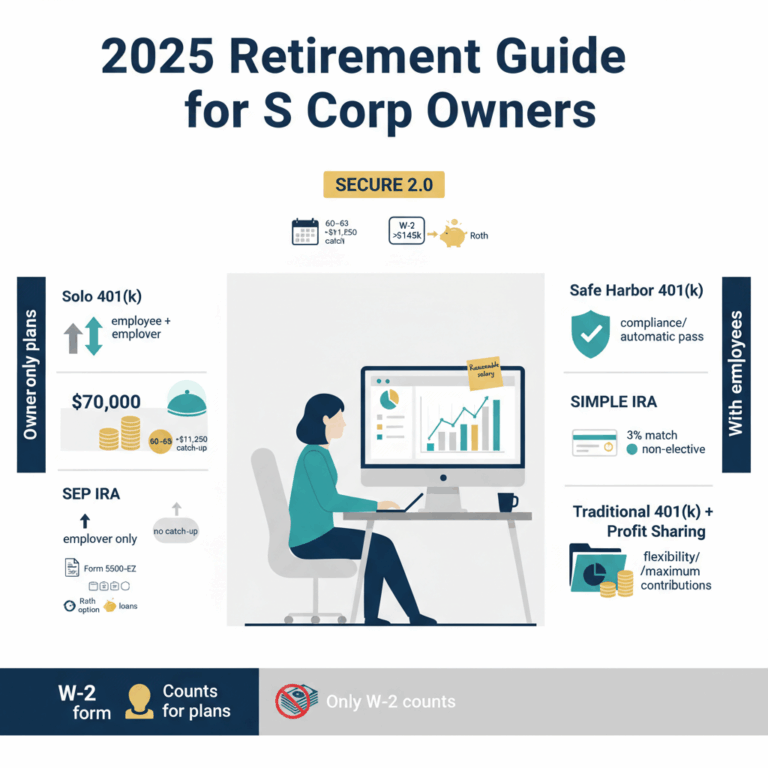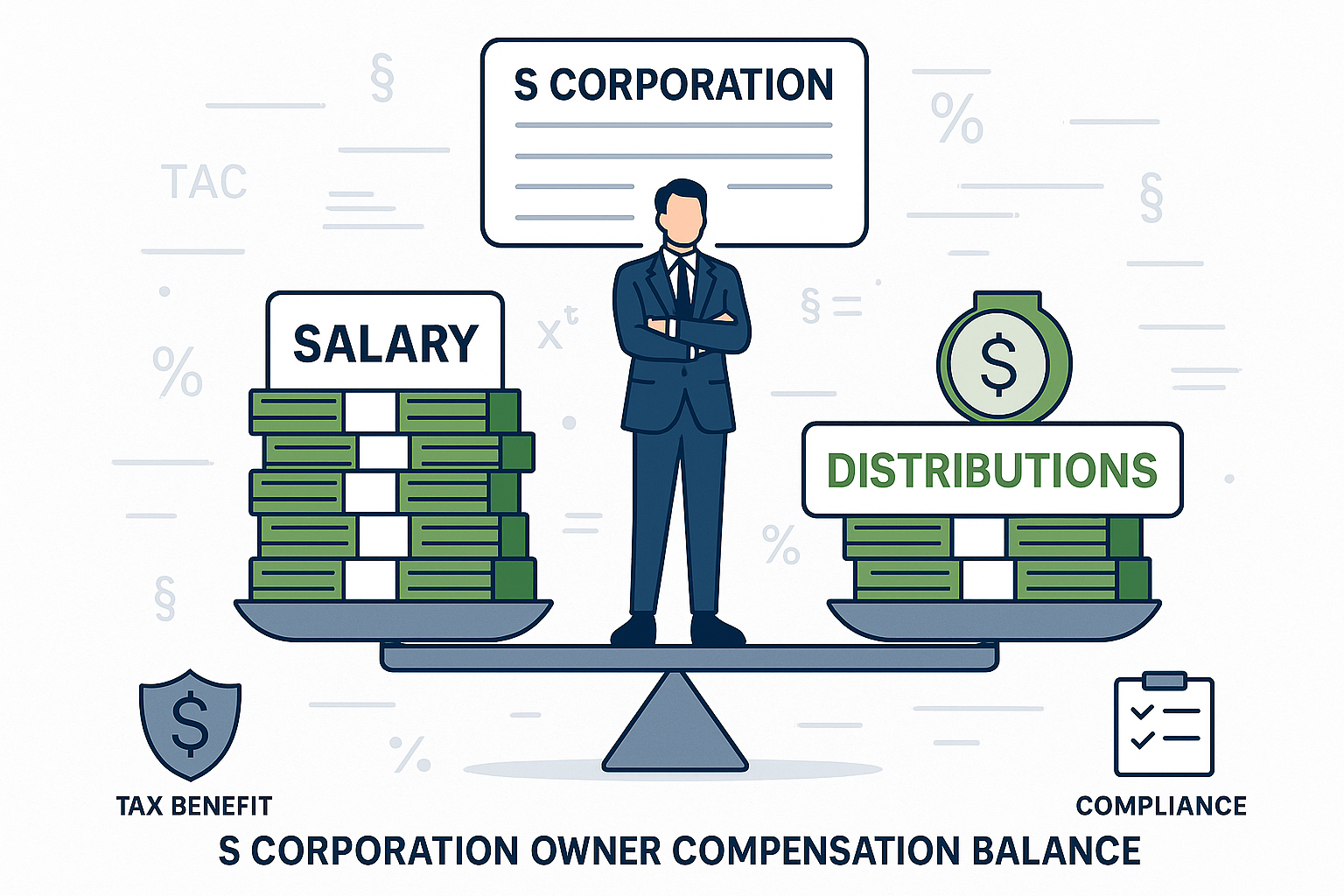Maximizing Returns: The Power of Cost Segregation for Real Estate Investors in 2025
As real estate investors navigate an increasingly complex tax landscape in 2025, cost segregation emerges as a powerful strategy to optimize returns and enhance cash flow. This tax planning approach allows property owners to reclassify building components into categories with shorter depreciation schedules, accelerating tax deductions and creating significant early-year savings. With bonus depreciation reduced to 40% this year and further reductions on the horizon, understanding how to leverage cost segregation has never been more crucial. This article explores the fundamentals of cost segregation, its implementation process, and its potential to transform investment outcomes in today’s evolving tax environment.
Implementing a Successful Cost Segregation Study
To maximize tax benefits through cost segregation, real estate investors need a systematic approach that combines professional expertise, thorough documentation, and strategic timing. The implementation process follows several critical steps to ensure both maximum tax savings and IRS compliance.
Assembling Your Professional Team
A successful cost segregation study requires specialized professionals working in concert. At minimum, your team should include qualified engineers who analyze physical property components, tax specialists who understand IRS classifications, and a CPA familiar with cost segregation benefits. When selecting a cost segregation firm, prioritize those with engineering expertise and a proven track record of defending studies during IRS scrutiny.
Engineers play a particularly crucial role, as they apply technical knowledge to identify components that qualify for accelerated depreciation. They “map building components, identify non-structural elements eligible for shorter depreciation periods (e.g., electrical systems, HVAC), and allocate costs” Source: Maven Cost Segregation.
Gathering Essential Documentation
Before beginning the study, collect comprehensive documentation that engineers will need for their analysis:
- Blueprints and architectural plans to identify physical components eligible for reclassification
- Construction contracts and invoices showing itemized costs for materials and systems
- Purchase agreements detailing the property acquisition and allocated costs
- Improvement records for any renovations or additions made since purchase
These documents enable engineers to “dissect invoices and project budgets into asset-specific allocations” Source: KBKG, providing the foundation for defensible asset reclassification.
The Study Process and Timeline
A professional cost segregation study typically takes 4-8 weeks to complete, depending on property complexity. The optimal time to conduct a study is immediately after acquiring a property or completing construction, allowing you to capture the maximum depreciation benefits from day one Source: NAIOP.
If you’ve owned the property for several years, the IRS permits “look-back studies” to retroactively claim missed deductions by filing Form 3115 (Application for Change in Accounting Method). This allows you to catch up on accelerated depreciation without amending prior returns Source: Rocket Mortgage.
Investment Required and ROI Evaluation
Professional cost segregation studies typically cost between $5,000 and $15,000, with variations based on property size, complexity, and the scope of analysis Source: Corporate Tax Advisors. For smaller properties valued under $2 million, costs may range from $2,500 to $6,000.
To determine if this investment makes financial sense, apply this general guideline: properties valued at $500,000 or more typically generate enough tax savings to justify the cost. The potential return on investment is substantial, as tax savings often outweigh study costs by “10-100x” Source: Windes.
Implementing the Study Findings
After completing the study, work with your tax professional to:
- Update depreciation schedules for reclassified assets
- File appropriate tax forms, including Form 3115 for look-back studies
- Maintain detailed documentation of all reclassified components
According to tax experts, you should “keep the full cost segregation report, including property analysis methodologies, detailed asset classifications and cost allocations” Source: CSSI Services to withstand potential IRS scrutiny.
Ensuring IRS Compliance
The IRS has specific requirements for cost segregation studies outlined in their Cost Segregation Audit Techniques Guide. To ensure your study meets these standards:
- Use professionals with established cost segregation expertise
- Ensure the study applies engineering-based methodology rather than merely estimating
- Obtain a detailed written report with specific asset classifications and supporting documentation
- Verify that the methodology aligns with IRS-approved approaches
Adhering to these guidelines minimizes audit risk and provides “audit-ready documentation” that generates “detailed reports linking classifications to IRS regulations, ensuring defendable audit positions” Source: Maven Cost Segregation.
Post-Study Best Practices
After implementing your cost segregation study, adopt these best practices to maximize benefits:
- Conduct regular reviews of your depreciation schedule every 3-5 years
- Document any asset disposals or replacements
- Plan for potential depreciation recapture when selling the property
- Consider complementary tax strategies that work alongside cost segregation
By following these implementation steps, real estate investors can successfully leverage cost segregation to accelerate depreciation deductions, increase cash flow, and enhance overall investment returns while maintaining compliance with IRS requirements.
The Step-by-Step Implementation Process
A successful cost segregation study follows a structured approach. The journey begins with a feasibility analysis to determine if your property qualifies based on factors like age, size, usage, and renovation costs. This critical first step ensures the potential tax savings will exceed the study’s cost Source: Segregation Holding.
Next comes the engineering review and site analysis phase. Engineers conduct comprehensive on-site surveys, photographing and documenting assets like flooring, electrical systems, and fixtures. They then allocate costs by classifying these assets into IRS-compliant categories using construction estimates, schematics, and industry cost databases Source: KBKG.
The heart of the process involves detailed cost reallocation, where assets are broken down into shorter depreciation categories. For instance, office renovations might be reclassified as tangible property with a 7-year depreciation life, while landscaping elements could qualify as non-structural components with 5-15 year depreciation periods Source: Rocket Mortgage.
Required Documentation and Timeline
Before initiating a cost segregation study, gather essential documentation to ensure accuracy and compliance. This includes purchase and acquisition information such as closing statements, fixed asset schedules, and land value allocation documents Source: Acena Consulting. Construction-related documents like blueprints, floor plans, contracts, and utility drawings are equally crucial for proper asset classification Source: Engineered Tax Services.
Timing is critical for maximizing benefits. For new construction, initiate the study during the building phase to access detailed cost records. For existing properties, complete the study before filing the tax return for the acquisition year. If you’ve owned properties for years without a cost segregation study, consider a look-back study by filing Form 3115 with a CPA to retroactively claim accelerated depreciation Source: Windes. A typical study takes 4-8 weeks from document collection to report completion.
Meeting IRS Requirements and Audit Scrutiny
The IRS maintains strict requirements for cost segregation studies, particularly emphasizing engineering-based analysis. Rule-of-thumb methods are explicitly rejected in favor of rigorous on-site inspections and component-specific cost allocations Source: IRS.
To withstand potential audit scrutiny, your study must demonstrate defensible methodology and comprehensive documentation. This includes detailed reports with methodologies, component economics, and engineering rationale supporting classifications. Maintain all supporting evidence such as construction invoices, blueprints, and engineering assessments Source: ASCSP.
The 2025 Cost Segregation Audit Techniques Guide (ATG) emphasizes precision in cost allocation and strict adherence to capitalized-to-expense rules Source: KBKG. Collaboration with certified firms or engineers is critical to ensure alignment with these expectations.
Real-World Success Stories and Future Outlook
Cost segregation has proven to be a powerful tax strategy for real estate investors across various property types, delivering substantial financial benefits through strategic asset reclassification. By examining actual case studies and exploring future considerations, investors can better understand how to maximize their returns while navigating potential challenges.
Success Stories: Real-World Tax Savings
A vacation rental property purchased in May 2023 for $1.12 million (excluding land) achieved remarkable tax savings through cost segregation. By reclassifying $168,548 to 5-year property (appliances, landscaping) and $29,215 to 15-year property (structural components like roofing), the owner secured first-year tax savings of $59,666 and a cumulative net present value of $43,065 over the property’s lifespan Source: CSSI Services.
Commercial properties have seen even more dramatic results. A small plaza acquisition in July 2022 with a depreciable basis of $3.9 million achieved first-year tax savings of $308,887 by reclassifying 11.7% to 5-year property and 11.3% to 15-year land improvements Source: Capstan Tax. Similarly, a large plaza acquisition in September 2023 with a $6.6 million depreciable basis yielded first-year tax savings of $612,004 through strategic reclassification of 16.6% to 5-year property and 16% to 15-year land improvements.
Perhaps most impressive are the results from mixed-use luxury apartment complexes. In one comparable case study, a property with approximately $26 million in assets saw significant benefits by reclassifying key components like parking structures, HVAC systems, and security installations to shorter depreciation periods Source: Acena Consulting. For properties of this scale, reclassifying approximately 20-30% of total assets into shorter lifetimes can generate over $1 million in first-year tax savings at current tax rates.
Navigating Common Challenges
Despite the clear benefits, cost segregation is not without risks. Proper implementation requires navigating several key challenges.
Audit risk remains a primary concern. While cost segregation studies themselves don’t inherently trigger audits, aggressive strategies and pattern-based red flags can elevate scrutiny Source: ELB Cost Segregation. The IRS particularly watches for new construction during bonus depreciation years and returns claiming unusually large deductions relative to income.
Documentation is crucial. Incomplete or improper records can undermine study credibility and lead to disqualification of claimed benefits. Accurate asset classification—distinguishing between real and personal property, land versus land improvements, and structural versus non-structural components—requires significant expertise Source: Engineered Tax Services.
When selling properties, investors must also be aware of depreciation recapture. This may trigger ordinary income tax on prior deductions, particularly with partial asset sales or insufficient documentation proving original asset values and classifications Source: KBKG.
Future Outlook: 2026 and Beyond
Cost segregation strategy is entering a critical transition period. Bonus depreciation rates are steadily declining—from 80% in 2023 to 60% in 2024, 40% in 2025, and just 20% in 2026—before completely phasing out in 2027 Source: RE Cost Segregation. This creates urgency for investors to conduct studies now while benefits remain substantial.
Pending tax reforms could further reshape depreciation schedules. While no final 2026 legislation exists yet, proposals may limit or completely repeal accelerated depreciation strategies Source: Barnes Dennig. Developers are advised to secure benefits before potential restrictions take effect.
Economic factors will also influence cost segregation’s value. Higher interest rates and financing costs may increase demand for the strategy, as accelerated depreciation deductions improve cash flow to meet elevated debt service payments Source: Rocket Mortgage. Similarly, persistent inflation in materials and labor amplifies benefits, as higher property costs mean larger deductible depreciation amounts when components are reclassified.
Integration with Other Tax Strategies
Forward-thinking investors are increasingly combining cost segregation with complementary tax strategies. When paired with 1031 exchanges, cost segregation can maximize depreciation deductions on replacement property components, especially when leveraging excess basis. This creates immediate tax savings while deferring capital gains indefinitely Source: Capstan Tax.
For Qualified Opportunity Zone investments, cost segregation can accelerate depreciation on property components within the zone, effectively lowering the deferred capital gains recognized at exit Source: Alternate Tax Solutions.
Market trends will drive sector-specific opportunities. Growth in industrial/logistics properties may focus segregation on land improvements like paving and fencing. Office/urban redevelopment will highlight opportunities to reclassify structural upgrades into 15-year depreciation schedules Source: Kaufman Rossin.
Conclusion
Cost segregation remains a vital tax strategy for real estate investors in 2025, despite changes to bonus depreciation rates. By reclassifying property components into shorter depreciation schedules, investors can accelerate deductions, improve cash flow, and enhance overall returns. The benefits often substantially outweigh the costs of conducting a professional study, especially for properties valued above $500,000. While the process requires professional expertise and careful documentation, the potential for six-figure tax savings makes it worth considering for serious investors. As tax laws continue to evolve, those who proactively implement cost segregation studies position themselves for financial advantage in both the short and long term. The key lies in acting decisively, engaging qualified professionals, and integrating this strategy within a comprehensive tax planning approach.
Sources
- Alternate Tax Solutions – When Does a Cost Segregation Study Make Sense?
- Acena Consulting – Case Study: Cost Segregation Study for a Mixed-Use Luxury Apartment Complex in Long Beach, CA
- Acena Consulting – IRS Criteria for a Quality Cost Segregation Study
- Acena Consulting – What Documentation is Needed to Complete a Cost Segregation Study
- ASCSP – Certification and Testing
- ASCSP – IRS Guidelines and Cost Segregation
- ASCSP – The Role of Engineers in Cost Segregation
- Barnes Dennig – Navigating 2026 Tax Proposals
- Capstan Tax – Cost Segregation Studies for Retail Properties
- Capstan Tax – Cost Segregation Study Explained
- Corporate Tax Advisors – Cost Segregation Study Cost
- CSSI Services – Short-Term Rental Case Study
- CSSI Services – Cost Segregation Tax Strategies
- Doeren – Capture These Tax Benefits with Cost Segregation
- ELB Cost Seg – Can a Cost Segregation Study Benefit 2024 Taxes Now That It’s 2025?
- ELB Cost Segregation – Do Cost Segregation Studies Increase the Chance of an Audit?
- Engineered Tax Services – 5 Tips to Avoid an Audit When Conducting a Cost Segregation Study
- Engineered Tax Services – What Information Needs to be Collected for a Cost Segregation Study?
- ES CPA – What Is Cost Segregation Study?
- IRS – Publication 5653
- Kaufman Rossin – What is a Cost Segregation Study in Real Estate?
- KBKG – Cost Segregation
- KBKG – IRS Updates Cost Segregation Audit Techniques Guide
- KBKG – Does a Cost Segregation Study Increase the Likelihood of Audit
- Maven Cost Segregation – Detailed Engineering Cost Segregation Studies
- NAIOP – The Property Life Cycle: Planning for Effective Cost Segregation Strategies
- Plante Moran – Cost Segregation 101: Key Considerations
- RE Cost Segregation – Bonus Depreciation 2025: What Real Estate Investors Need to Know
- Real Estate Cost Segregation – Qualifying as a Real Estate Professional: A Comprehensive Guide
- Real Estate Cost Segregation – The 13 Must-Have Elements of a Quality Cost Segregation Study
- Remote Cost Seg – Cost Segregation Benefits in 2025
- Rocket Mortgage – Cost Segregation
- Royal Legal Solutions – The Cost Segregation Study: What STR Investors Need to Know 2025
- Segregation Holding – 8 Simple Steps Involved Cost Segregation Study Process
- Specialty Tax Group – How Far Back Should You Go for Filing Cost Segregation? Unlocking 10 Years of Tax Benefits
- Veritax Advisors – Navigating the World of Cost Segregation Studies
- Windes – FAQs: Answers about Cost Segregation Studies





